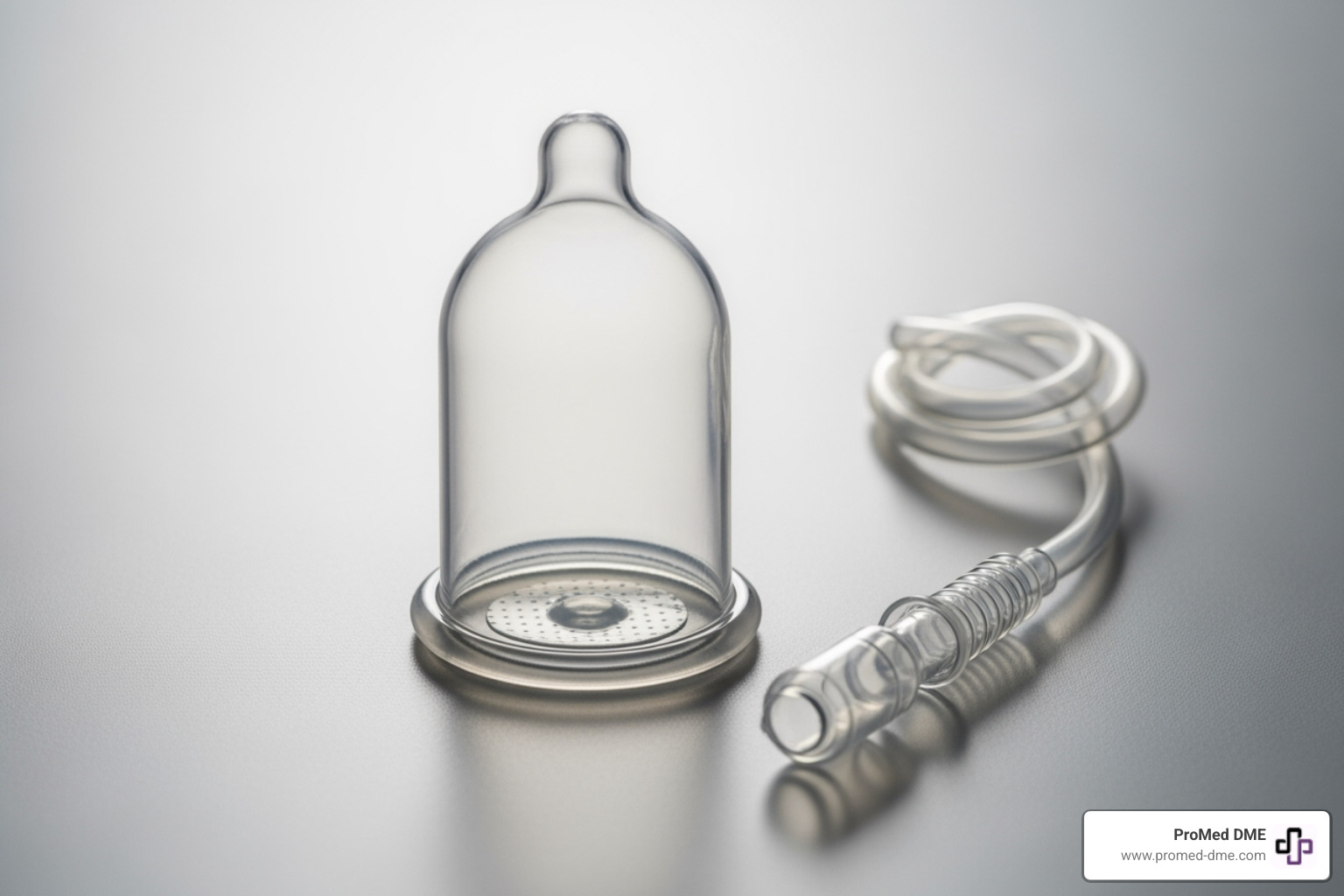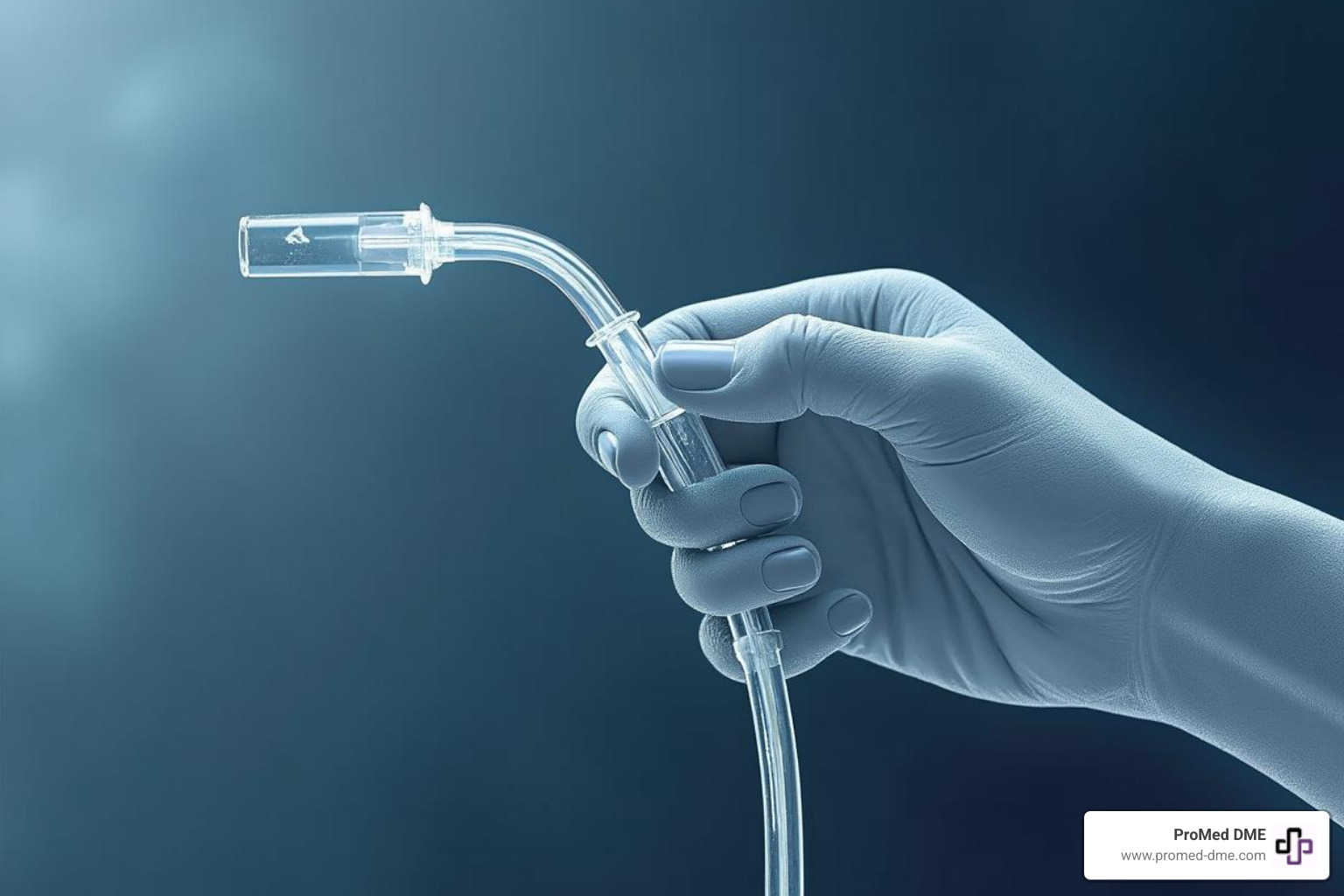Insulin Pump Tubing Length Explained – Find Your Perfect Fit
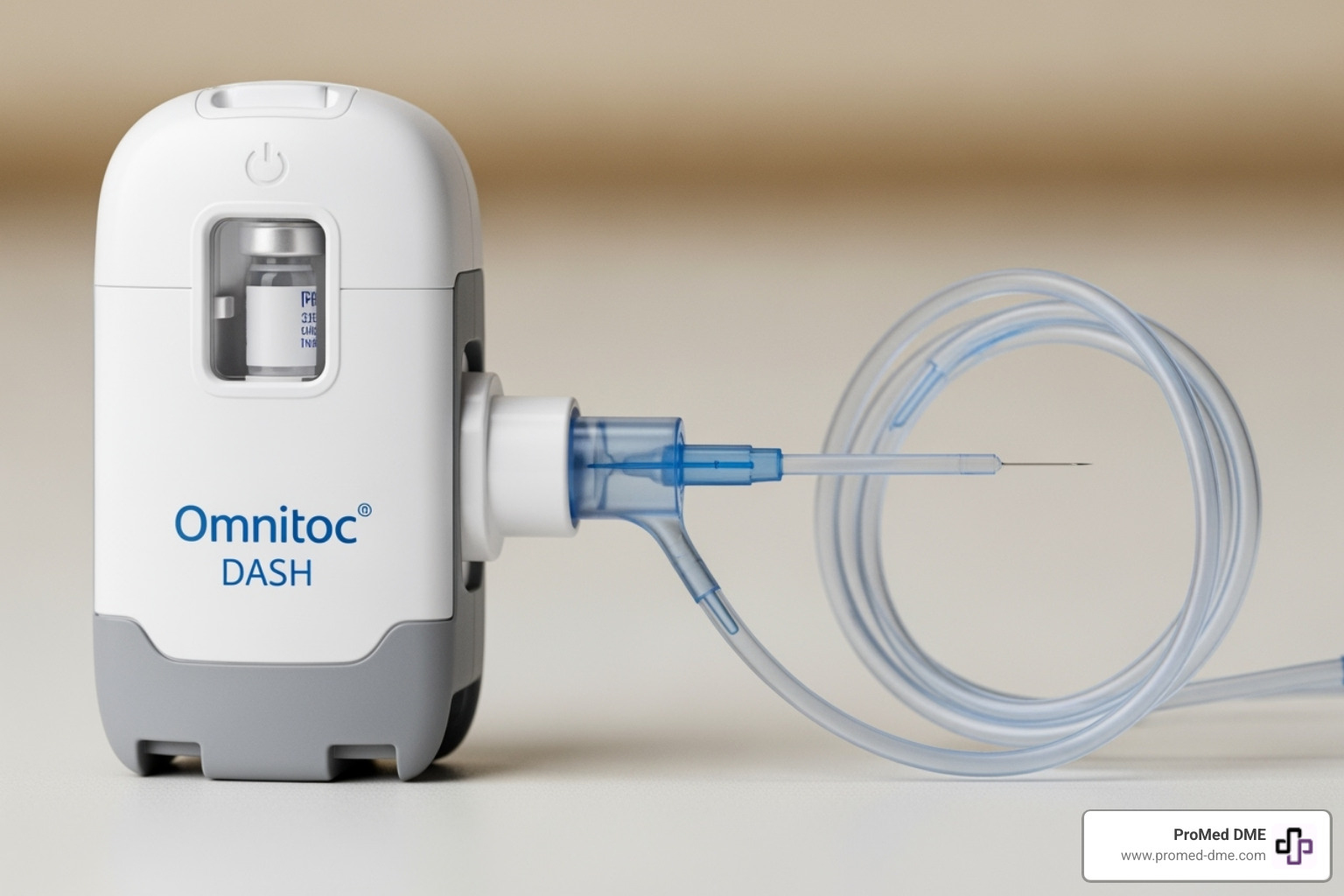
Why Insulin Pump Tubing Length Matters for Your Comfort and Freedom
Insulin pump tubing length is one of the most personal choices you'll make in your diabetes management journey. While it might seem like a small detail, the right tubing length can make the difference between feeling confident and comfortable or constantly worried about your pump getting in the way.
Quick Answer for Insulin Pump Tubing Length:
- Standard lengths available: 18", 23", 32", 43" (or 45cm, 60cm, 80cm, 110cm)
- Shorter tubing (18"-23"): Best for discreet wear, less snagging, pump worn close to infusion site
- Longer tubing (32"-43"): Better for flexibility, easier bathroom breaks, taller individuals
- Choice depends on: Your height, activity level, pump placement preferences, and lifestyle
As one diabetes educator noted in our research, the ideal tubing length should be "long enough to hit the floor when you go to the bathroom, but short enough to not snag it on door handles." This practical advice captures the balancing act every pump user faces.
Your tubing length affects everything from how you sleep to what clothes you can wear comfortably. Too short, and you'll feel restricted. Too long, and you'll deal with excess tubing that can snag, kink, or get in your way during daily activities.
The good news? You're not stuck with your first choice. Most people try different lengths before finding their perfect fit. And with today's infusion sets offering multiple options from major manufacturers like Medtronic and Tandem, you have plenty of choices to match your unique needs.
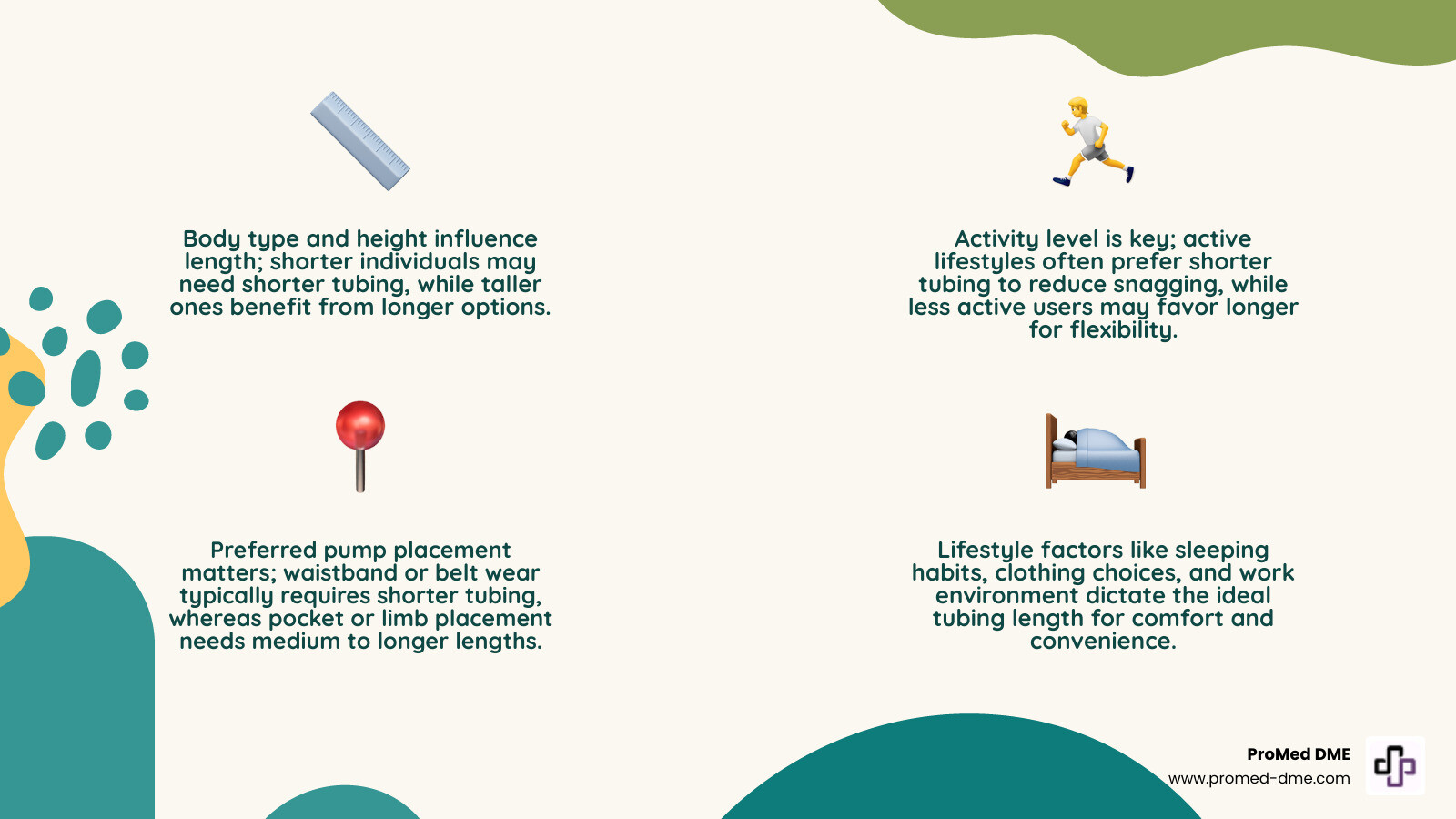
Find more about Insulin pump tubing length:
What Are the Standard Insulin Pump Tubing Lengths?
Understanding insulin pump tubing length starts with knowing what you're working with. Your infusion set is the bridge between your pump and your body, a delivery system with three main parts.
The cannula is a tiny tube that goes under your skin. The hub sits on the surface, connecting to the tubing that carries insulin from the pump via a secure connector.
Most infusion sets get changed every 2-3 days, though some of the newer extended-wear options can last up to a week. It's during these changes that you might decide to try a different insulin pump tubing length if your current one isn't quite right.
Manufacturers know that your body, lifestyle, and preferences are uniquely yours. That's why they offer several standard lengths, measured in both inches and centimeters depending on what feels more natural to you.
The most common insulin pump tubing lengths you'll find are:
- 18 inches (45 cm) - The shortest option for close-to-body wear
- 23 inches (60 cm) - A popular middle-ground choice
- 32 inches (80 cm) - More flexibility for pocket or pouch placement
- 43 inches (110 cm) - Maximum freedom for taller users or distant pump placement
You might notice slight variations between product lines (e.g., 31 vs. 32 inches), but the core options are consistent.
Why So Many Options?
What works for one person with diabetes might not work for another, and that's completely normal. Your ideal insulin pump tubing length depends on personal factors like your height, where you place your pump, and your activity level.
An athlete's needs differ from someone using a bra pouch, and a child's needs differ from an adult's. Even sleeping habits matter, as some people need extra length to move comfortably at night.
This variety lets you customize your therapy to fit your life, not the other way around. The goal is finding that sweet spot where your pump feels like a natural part of your routine rather than a piece of equipment to manage.
How to Choose the Right Tubing Length for Your Lifestyle
Finding the perfect insulin pump tubing length is a personal choice that directly impacts your daily comfort and confidence.
Most people don't get it right on the first try, which is normal. Consider it a learning process. Your diabetes educator can offer valuable insights you might not have considered.
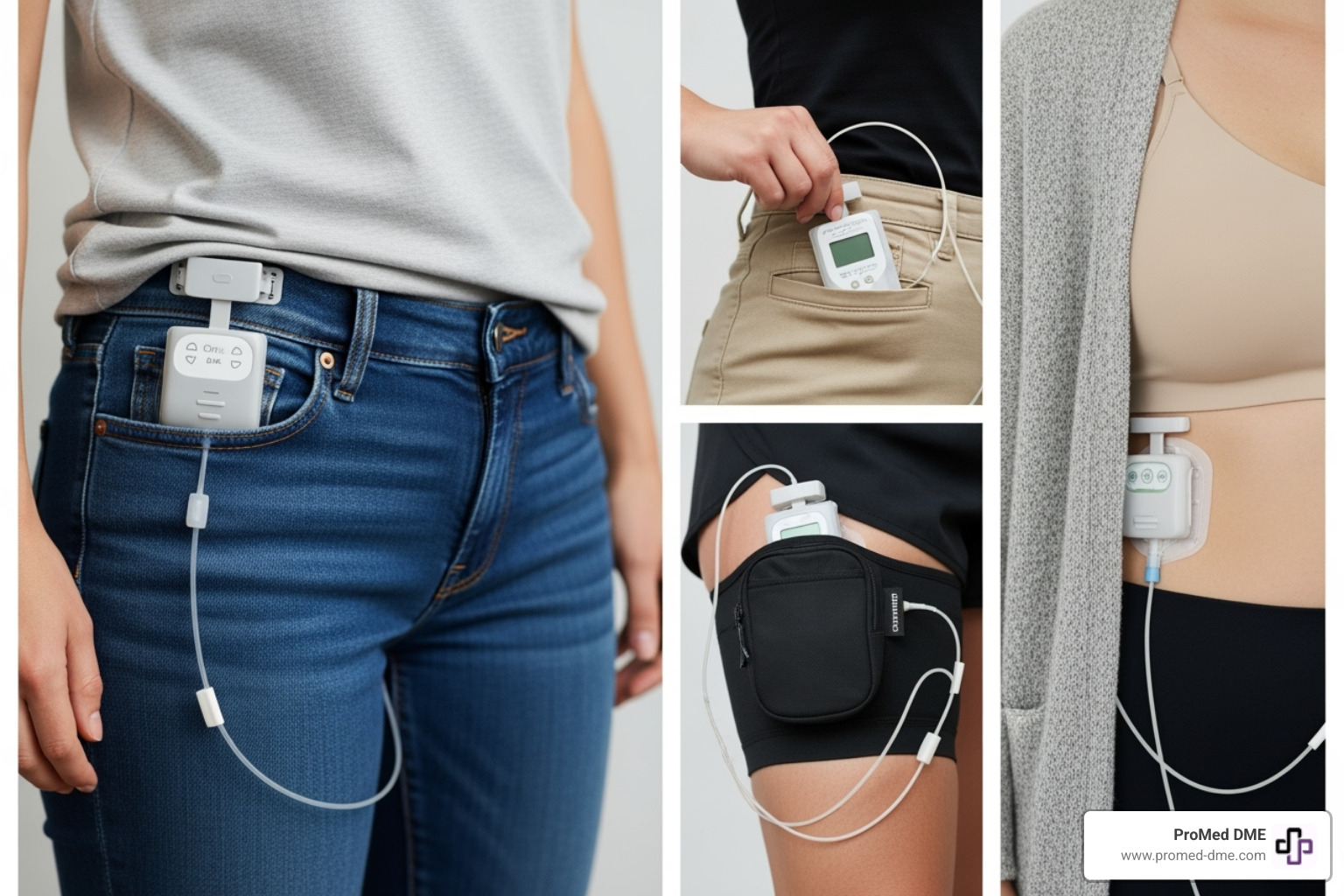
The image above shows just how many ways you can wear your pump, and each placement style needs a different approach to tubing length. Let's break down the main factors that should guide your decision.
Consider Your Body Type and Height
Your body is unique, and your tubing length should reflect that. Height is a major factor; taller individuals generally need longer tubing to avoid feeling restricted.
But height isn't the whole story. Torso length matters too. Two people might be the same height, but one could have longer legs and a shorter torso. The person with the longer torso will likely need more tubing length to feel comfortable.
Children typically need shorter tubing. Their smaller size and active lifestyles mean excess tubing can be a hazard, getting caught on playground equipment or furniture.
Your body composition also plays a subtle role. If you're very lean, shorter tubing often lies flatter and stays more discreet under clothing. If you have more curves, you might appreciate the extra slack that longer tubing provides, preventing any pulling sensation at your infusion site.
Factor in Your Daily Activities and Exercise
Your lifestyle is a key driver of your choice. If you're active, shorter tubing is often preferred. Less tubing means fewer chances for it to snag on door handles, equipment, or your arms during a workout.
For active people, minimizing this risk prevents painful infusion set pull-outs and disruptions to insulin delivery.
If you have a desk job, your concerns might be different. You'll want enough length to move comfortably while seated and not feel restricted when you stand up. You probably don't need to worry as much about snagging during high-energy activities.
Contact sports present their own challenges. While you might disconnect your pump for the actual game, during practice or warm-ups, having tubing that stays safely tucked away is crucial. Some people find that insulin pump challenges become more manageable once they find their ideal tubing length.
Think About Your Preferred Pump Placement
Where you like to wear your pump is probably the most important factor in choosing your insulin pump tubing length. Each placement style has its own requirements.
Waistband or belt clipping is classic for a reason – it's secure and accessible. For this style, you'll typically want a shorter to medium length (23 or 32 inches), depending on your height and where you place your infusion sites.
Pocket placement is incredibly popular because it's discreet and keeps your pump protected. But pockets vary – front pants pockets, back pockets, jacket pockets, or even specially designed pump pockets all require different lengths. Generally, you'll want medium to longer tubing (32 or 43 inches) to give yourself enough slack.
Bra pouches offer great discretion and security, especially for people who wear dresses or don't have reliable pockets. Since the distance to most infusion sites is relatively short, shorter to medium lengths usually work best here.
Arm or thigh bands are fantastic for exercise or when you want your pump completely out of the way. These almost always require the longest tubing available (43 inches) because of the extended distance from typical infusion sites.
Don't forget about sleeping. If you're a restless sleeper who tosses and turns, longer tubing can prevent uncomfortable pulling or those middle-of-the-night disconnections that nobody wants to deal with. Some people keep their pump under their pillow or on the nightstand, which definitely calls for extra length.
The beauty of modern insulin pump therapy is that you can experiment with different lengths to find what feels right for your lifestyle and preferences.
Shorter vs. Longer Tubing: A Comparison
When you're deciding on the perfect insulin pump tubing length, you're essentially choosing between two different philosophies of pump wearing. It's like choosing between a compact car and an SUV – both will get you where you need to go, but the experience is quite different.
| Feature / Aspect | Shorter Tubing (e.g., 18", 23") | Longer Tubing (e.g., 32", 43") |
|---|---|---|
| Discretion | Easier to hide under clothing; less visible bulk. | More visible, potentially creating bulk, harder to conceal. |
| Snagging Risk | Significantly reduced risk of catching on objects or clothing. | Higher risk of snagging on doorknobs, furniture, or during activities. |
| Pump Placement | Best for pump worn close to the infusion site (e.g., waistband, bra). | Offers greater freedom for pump placement (e.g., pocket, arm/thigh band, nightstand). |
| Movement Freedom | Can feel restrictive if not worn close to site; less slack for disconnection. | More slack allows for greater movement and easier disconnection for activities like showering. |
| Priming Volume | Requires less insulin to prime the tubing. | Requires more insulin to prime, reducing insulin available in reservoir. |
| Kinking/Tangling | Less prone to kinking or tangling due to shorter length. | More prone to kinking or tangling, potentially leading to occlusions. |
| Bathroom Breaks | May require disconnection or careful maneuvering if pump is not worn on clothes. | Easier to manage without disconnection, as it can reach the floor. |
| Sleeping | Can be restrictive if pump is worn on body; less flexible for movement. | More flexible, allowing pump to be placed further away (e.g., nightstand, under pillow). |
| Aesthetics | Cleaner, less noticeable profile. | Can look messy or draw attention due to excess length. |
Both shorter and longer tubing have passionate advocates. Your choice often comes down to what bothers you more: feeling tethered or managing excess tubing.
The Case for Shorter Tubing
Shorter tubing (18 or 23 inches) is a minimalist approach, providing just enough length to get the job done, which many people find freeing.
Discretion is a major benefit. Less tubing is easier to hide, creating a cleaner look under clothing. This can be a confidence booster for those who prefer to keep their diabetes management private.
The reduced snagging risk is another key advantage. With less tubing to catch on objects like door handles, there are fewer interruptions and less risk of accidentally pulling out your infusion set.
Shorter tubing works beautifully when your pump is worn close to the infusion site – think clipped to your waistband, tucked into a bra, or secured to a belt. The setup feels neat and controlled.
The Advantages of Longer Tubing
Longer insulin pump tubing length options are all about freedom and flexibility. With 32 or 43 inches of tubing, you're giving yourself permission to be more creative with how and where you wear your pump.
Placement flexibility is the standout benefit here. Want to keep your pump in your pocket? No problem. Prefer to clip it to your bra strap? Easy. Need to put it on your nightstand while you sleep? The longer tubing makes it possible. This flexibility can be life-changing for people who struggle to find comfortable pump placement with shorter tubing.
Easier disconnection is another huge advantage. When you need to disconnect for a shower or swimming, you can simply set your pump down nearby without having to remove your entire infusion set. It's a convenience that makes daily life much easier.
For taller individuals, longer tubing often isn't just preferred – it's necessary. The extra length ensures you can move naturally without feeling like your pump is pulling on your infusion site.
The trade-off is that longer tubing requires more management to tuck away and avoid snags, but many users find the flexibility worth it.
Does Tubing Length Impact Insulin Delivery and Comfort?
The insulin pump tubing length you choose affects both insulin delivery and daily comfort. Think of the tubing as a tiny highway for your insulin; keeping it clear is key.
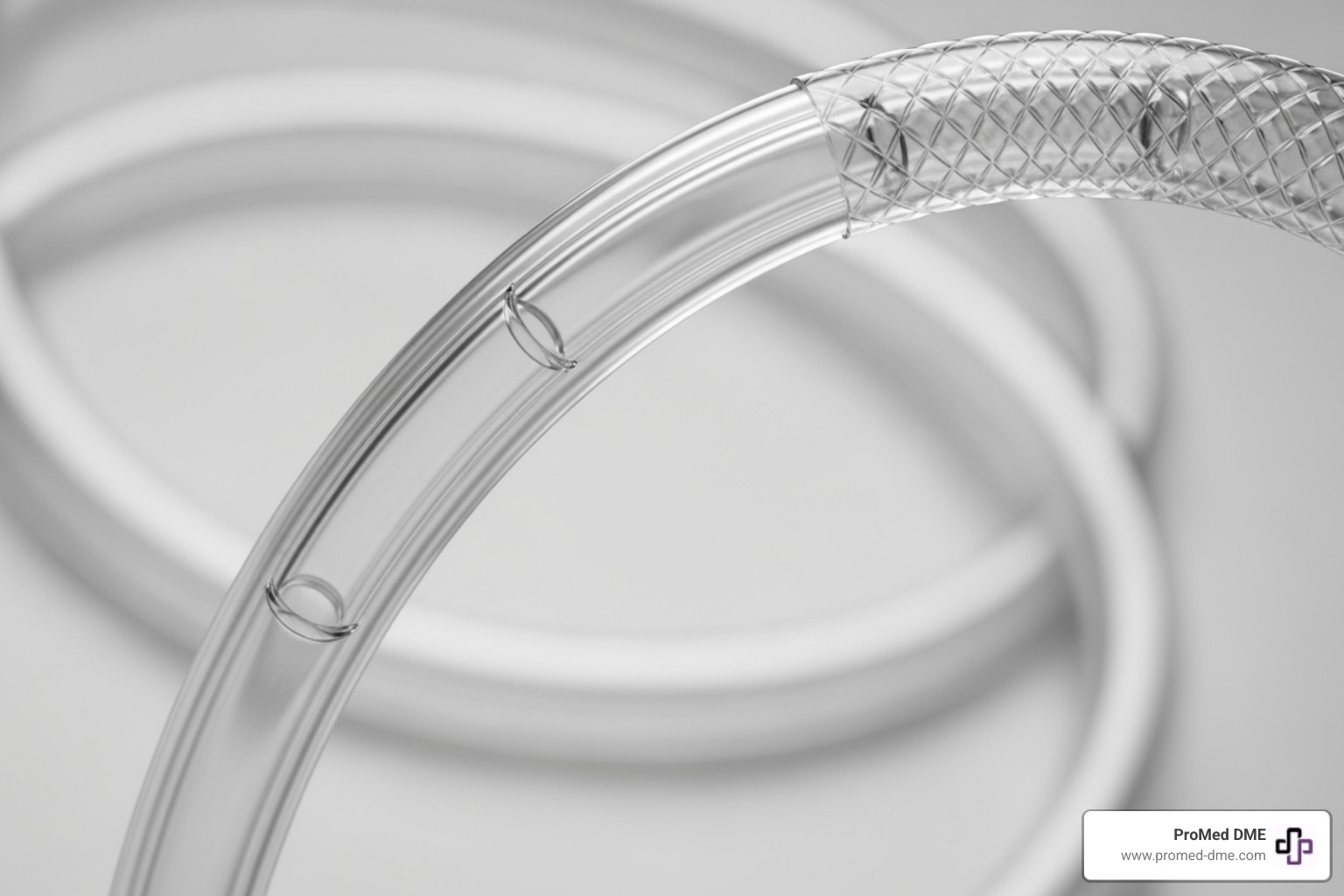
One of the biggest worries with tubing is it getting kinked or snagged. Imagine a garden hose with a kink – the water can't flow! The same happens with your insulin. If your tubing gets a kink, insulin flow can slow down or stop. This can lead to high blood sugar and an "occlusion alarm," which means there's a blockage. When that happens, you need to act fast and often change your infusion set.
Snagging on furniture or doorknobs is another common issue. This can be painful and even pull out your infusion site, stopping insulin delivery. Modern tubing is flexible and kink-resistant, but problems can still occur.
Impact on Insulin Delivery and Pump Performance
Does the insulin pump tubing length itself change how accurately your pump gives you insulin? Not directly. Your pump's motor is super precise. But the tubing length can affect things indirectly if there are mechanical issues.
For example, a longer tube means a tiny bit more insulin is needed to prime it. That's the little bit of insulin that fills the tube before it reaches your body. This is something to keep in mind, but it's a small amount.
You might also wonder about air bubbles. While not usually caused by tubing length, a longer tube could hold more air if it's not primed just right. Air bubbles can make delivery inaccurate if they're not cleared out. But with good priming habits, this is pretty rare.
The biggest concern for insulin delivery is truly mechanical issues like occlusions and kinking. If a long tube gets tangled or pinched, it can block the insulin from getting to you. That's why it's so important to route and secure longer tubes well. Good news: when your tubing and site are working perfectly, the length has a very small impact on how accurate your insulin delivery is. In fact, scientific research on advanced automated insulin delivery systems mostly focuses on the pump's brain and how precise it is, assuming your tubing is doing its job! You can learn more about this research here: Scientific research on automated insulin delivery.
Maximizing Comfort and Discretion with the Right Insulin pump tubing length
Choosing the right insulin pump tubing length is super important for how comfortable you feel and how private you want your diabetes management to be.
If you like to keep your pump hidden, shorter tubing naturally helps. It's easier to tuck away under clothes, giving you a smooth look. This can be a big plus if you prefer to keep your diabetes management to yourself. Longer tubing can also be hidden, but it might take a bit more creativity or special clothing to avoid bumps or lines.
Another huge comfort factor is avoiding skin irritation from snags. A tube that's constantly pulling on your infusion site can cause redness, soreness, or even pain. Picking a length that keeps the tension off your site is key to keeping your skin happy and healthy. No one wants a painful pull!
Having the right length can give you a wonderful feeling of freedom. You won't constantly be thinking about your pump or worrying if it's going to snag. You can move, stretch, and enjoy your day without feeling held back. This sense of peace, knowing your pump is secure and discreet, can truly boost your quality of life. It helps your pump become a quiet helper in your daily routine, rather than a constant reminder of your diabetes.
Frequently Asked Questions about Insulin Pump Tubing
Navigating diabetes management brings up many questions, especially about details like insulin pump tubing length. Getting it right can make a huge difference in your daily comfort. Let's explore some common questions to help you make informed choices.
Can I switch between different tubing lengths?
Absolutely! You are not stuck with your first choice. Many people try different insulin pump tubing length options as their lifestyle or body changes, or simply to find the perfect fit.
Switching is usually simple. You'll just need to order your infusion sets with the new, desired tubing length. Most major manufacturers offer their popular sets in a variety of lengths, giving you plenty of room to explore. We always recommend having a quick chat with your healthcare provider or diabetes educator. They know your unique needs best and can offer personalized advice or help you troubleshoot any questions that pop up. Think of it as an exciting part of your journey to maximize your comfort and convenience!
How do I measure for the correct Insulin pump tubing length?
Finding your ideal insulin pump tubing length is a bit like being your own personal tailor – it involves some hands-on measuring and a little imagination! Here’s a super practical way to figure out what might work best for you:
First, picture where you usually like to wear your pump. Is it clipped to your waistband, tucked into a pocket, in a bra, or maybe on an arm or thigh band? Next, choose a typical spot for your infusion site, like your abdomen, hip, or arm.
Now, grab a piece of string or a flexible measuring tape. Hold one end at your chosen infusion site. Then, gently route the string or tape to where your pump would sit, just like the actual tubing would lie on or under your clothes. This is the crucial part: don't pull it tight! You need to add a bit of slack for natural movement. Think about bending over, reaching for something, or even momentarily disconnecting your pump for a shower. You want enough length so you never feel restricted or like your site is tugging.
Once you've got that perfect, comfortable "tubing" path, mark the string where it reaches your pump. Then, measure that length. This will give you a great estimate of the minimum length you'll need. Compare this measurement to the standard available tubing lengths (like 18", 23", 32", 43" or their metric pals). If you're on the fence between two lengths, it's often a good idea to lean towards the slightly longer one – you can always tuck away a little excess, but you can't magically make a short tube longer! This is a great starting point, but the real test is always wearing the actual tubing in your daily life.
Is there a "best" tubing length?
If only it were that simple! The honest answer is a resounding "no," there is no single "best" insulin pump tubing length that works for everyone. It's truly one of the most personal choices you'll make in your diabetes management. What feels absolutely perfect for one person might be totally impractical or uncomfortable for another.
Your unique combination of factors – everything from your body type and height to your daily activities, where you prefer to wear your pump, and even your sleeping habits – all play a role in what will be the "best" length for you. It's all about finding that sweet spot that balances discretion (how easily you can hide it), freedom of movement, and overall convenience. Some folks prioritize minimal tubing for a super sleek, hidden look, while others value the extra slack for ultimate flexibility in pump placement or to make those quick disconnections easier.
The journey to finding your perfect insulin pump tubing length is a key part of your personalized diabetes management strategy. It really shows just how adaptive and user-focused modern pump therapy can be, empowering you to find what truly fits seamlessly into your life.
Conclusión
Finding the right insulin pump tubing length doesn't have to be another source of stress in your diabetes management journey. Think of it as finding your perfect fit – just like a favorite pair of jeans that makes you feel confident and comfortable all day long.
The most important thing to remember is that there's no universal "right" answer. Your perfect tubing length depends on your unique combination of height, lifestyle, activities, and personal preferences. Whether you're drawn to the discretion of shorter tubing or the flexibility of longer options, what matters most is how it fits into your daily routine.
We've walked through the standard lengths available, explored how your body type and activities should guide your choice, and compared the real-world pros and cons of different options. The goal isn't perfection on the first try – it's finding what works best for you through some trial and maybe a little error along the way.
Your insulin pump tubing length choice is really about reclaiming your freedom. The right length should fade into the background of your life, letting you focus on work, play, sleep, and everything in between without constantly thinking about your pump. It should give you confidence, whether you're reaching for something on a high shelf or settling in for a good night's sleep.
At ProMed DME, we've seen how the right supplies can transform someone's diabetes management experience. That's why we're here to support you with quality products, personalized guidance from our dedicated nurse, and the convenience of free shipping across the United States. We work with most insurance plans because we believe cost shouldn't be a barrier to getting the supplies that help you feel your best.
Your diabetes management is personal, and your supplies should be too. Let us help you find not just the right tubing length, but all the diabetes supplies that fit seamlessly into your life.
Recursos y artículos relacionados
Manténgase informado con las entradas de nuestro blog informativo.
Descubra las ventajas de ProMed
y pruebe nuestros productos
Ofrecemos envío gratuito y un legendario servicio de atención al cliente para garantizar que reciba los
mejores productos de DME para sus necesidades.

